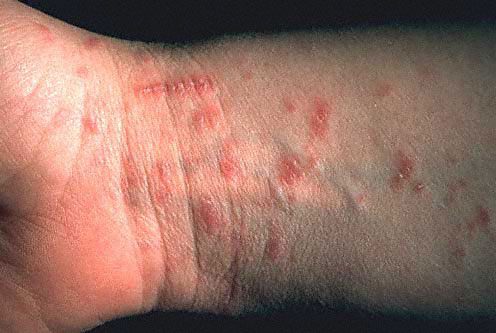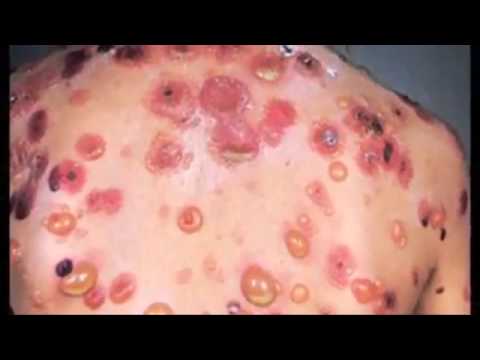[Original article on NHS Choices website]
Scabies is a contagious skin condition caused by tiny mites that burrow into the skin.
The main symptom of scabies is intense itching that’s worse at night. It also causes a skin rash on areas where the mites have burrowed.
Read more about the symptoms of scabies.
Scabies mites
Scabies mites are called Sarcoptes scabiei. They feed using their mouths and front legs to burrow into the outer layer of skin (epidermis), where they lay eggs.
After three to four days, the baby mites (larvae) hatch and move to the surface of the skin, where they mature into adults.
Scabies like warm places, such as skin folds, between the fingers, under fingernails, or around the buttock or breast creases. They can also hide under watch straps, bracelets or rings.
Read more about the life cycle of the scabies mite.
How scabies is spread
Scabies is usually spread through prolonged periods of skin-to-skin contact with an infected person, or through sexual contact.
It’s also possible – but rare – for scabies to be passed on by sharing clothing, towels and bedding with someone who’s infected.
It can take up to eight weeks for the symptoms of scabies to appear after the initial infection. This is known as the incubation period.
Read more about the causes of scabies.
Scabies outbreaks
Scabies is widespread in densely populated areas with limited access to medical care, and is most common in the following tropical and subtropical areas:
Africa
Central and South America
northern and central Australia
Caribbean Islands
India
southeast Asia
In developed countries, scabies outbreaks can sometimes occur in places where there are lots of people, such as schools, nurseries and care homes.
In the UK, most outbreaks of scabies occur in the winter. This may be because people tend to spend more time indoors and closer to each other at this time of year.
It’s difficult to know exactly how many cases of scabies there are in the UK. This is because many people don’t visit their GP and treat the condition with non-prescription medicines.
Treating scabies
Visit your GP if you think you have scabies. It’s not usually a serious condition, but it does need to be treated.
The two most widely used treatments for scabies are permethrin cream and malathion lotion (brand name Derbac M). Both medications contain insecticides that kill the scabies mite.
Permethrin 5% cream is usually recommended as the first treatment. Malathion 0.5% lotion is used if permethrin is ineffective.
If your partner has been diagnosed with genital scabies, to avoid reinfection you should visit your nearest sexual health clinic so you can be checked and, if necessary, treated.
Avoid having sex and other forms of close bodily contact until both you and your partner have completed the full course of treatment.
Read more about diagnosing scabies and treating scabies.
Complications of scabies
Scabies can sometimes lead to a secondary skin infection if your skin becomes irritated and inflamed through excessive itching.
Crusted scabies is a rare but more severe form of scabies, where a large number of mites are in the skin. This can develop in older people and those with a lowered immunity.
Read more about complications of scabies.










